Banaras’ bengali library: preserving heritage, books, and diaspora identity - GetBengal Story
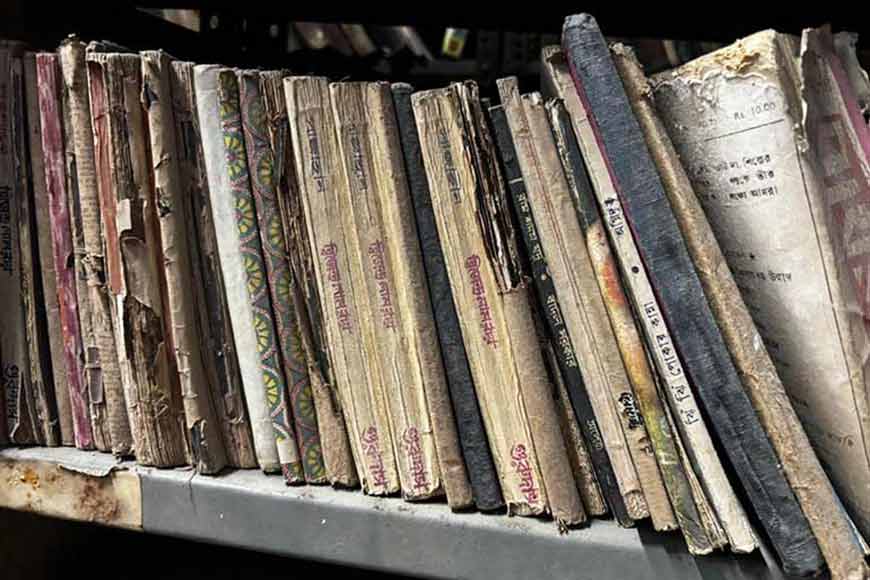
Humans usually migrate for livelihood. But Bengalis’ relationship with Banaras (Varanasi) is not exactly that. Over time, they have indeed come here for education and trade, but mostly to make Kashi their permanent home. There is no clear record of when Bengalis first started considering Kashi as their second home. Some trace it back to the Pala period, but it would be childish to think that Bengalis had no connection with Kashi even before that. Perhaps that is why, every time this ancient city was attacked by foreigners, Bengalis too helped rebuild it with their contribution. But all that is history — what is the situation today? This question was asked to Professor Subrata Bhattacharya of the Chemistry Department, Banaras Hindu University.
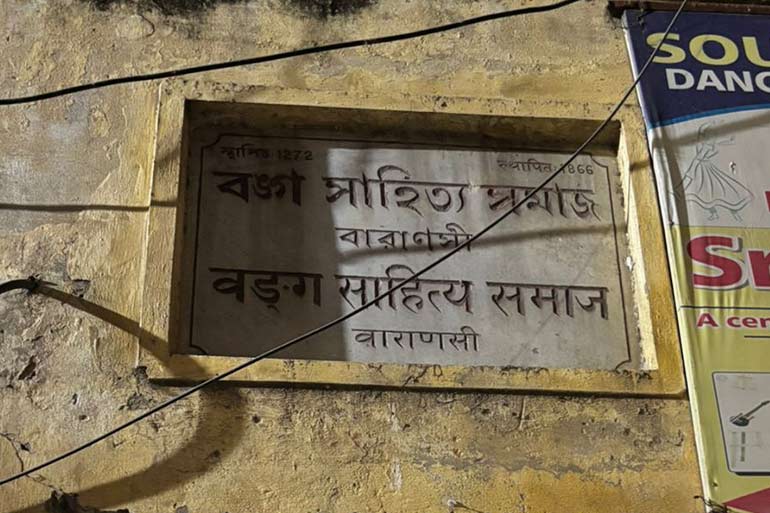
The conversation took place at the Banga Sahitya Samaj (Bengal Literary Society) in Banaras, at their Jangambari address. The house is called Taracharan Sahityacharya Smriti Bhavan. If a curious reader searches this address on Google, they will be disappointed — but it is not an imaginary place. Around 160 years ago, under the guidance of the late Chandicharan Mukhopadhyay and in the house of the late Gopalchandra Pakrashi, this small society was formed. It started with a collection of 155 books — of which 65 were donations — including contributions from Ishwar Chandra Vidyasagar, Bamasundari Devi, and Amritlal Mitra.
The main inspiration behind forming this society was the negligence of Bengalis in Kashi toward their own language, as well as the indifference of the local government.
The love for the smell of new books has not faded from the memories of those who have just stepped out of youth. And even among piles of old dusty books, there lies a kind of intoxication — which every book lover will agree with. In the dimly lit room of this building, one might recall Murakami’s The Strange Library. It feels as if the sighs of old readers still echo there. Their fingerprints and palm lines seem to knock on the door of destiny.
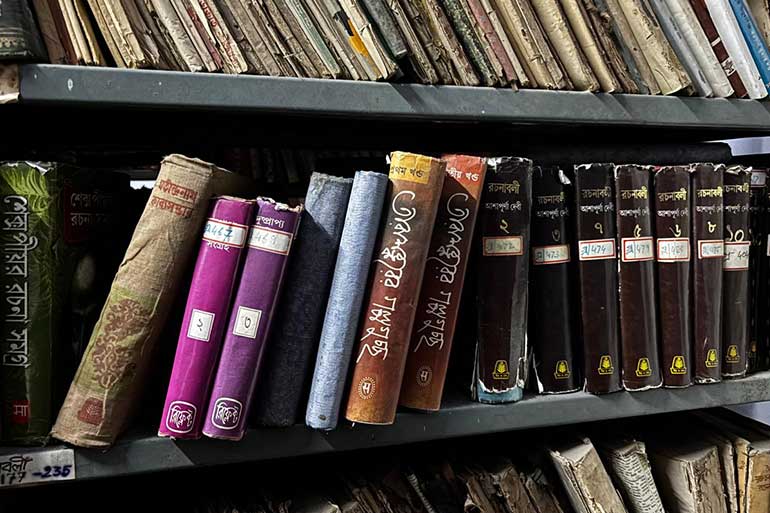
The Banga Sahitya Samaj was started independently in 1866 and became a branch of the Bangiya Sahitya Parishad (Bengal Literary Council) about five decades later, based on a proposal by the late Byomkesh Mustafi. The Banga Sahitya Samaj gradually changed locations several times as it acquired more members and more books, before it settled in late 20th century at its current address. Rabindranath Tagore said in one meeting that the primary duty of the society was “to obtain and collect the priceless gems from the literature of all ages and all parts of the world.”
● The number of Bengalis living in Banaras today is about 2.5 lakh (250,000).
● The total population of the city is around 20–22 lakh (2–2.2 million).
● The Bengali population has dropped by nearly half in the last 50 years.
● The society currently has about 250 active members.
From Sonarpura to Bangalitola, the Bengali settlement in Banaras had a rich history even a few decades ago. Today, the city’s demographics have changed. Many personal book collections, neglected by their inheritors, have now found their way to Taracharan Sahityacharya Smriti Bhavan.
This library now houses around 20,000 books divided into categories like history, poetry, novels, religious texts, music, theatre, and periodicals. It dreams of becoming a proper research centre. The ground floor contains books; the first floor holds manuscripts and old journals — including early issues of Bangadarshan. It stands as a living record of the Bengali diaspora in the westward journey from Bengal.
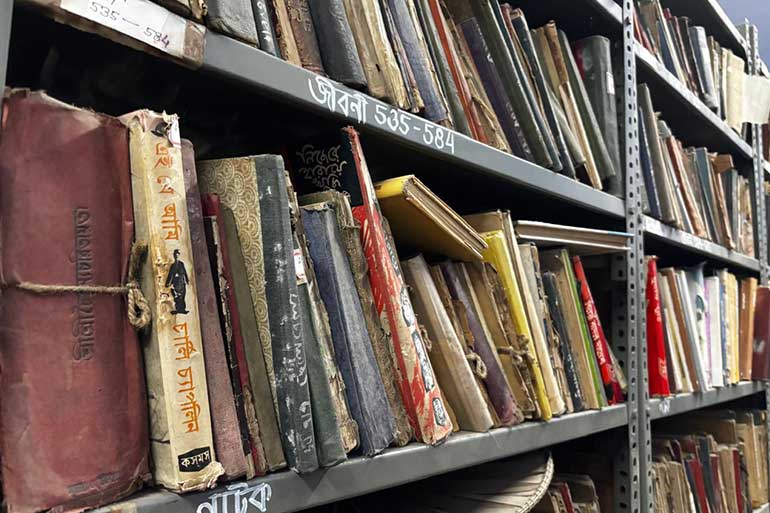
During monsoon, the ghats of Banaras get submerged. Carrying a fifty-year-old book that no one has ever borrowed, we return home. The word “Bengali Intelligentsia” rings faintly in memory. Amidst the flowing Ganga, the spirit of postcolonial thought calls softly.
An old house with a flickering lamp — and voices chanting “Har Har Mahadev” — seems to protest against modernity. A chatbot notification pops up on a screen. I tell it about this library. The lifeless, artificial bot responds with unexpected enthusiasm — maybe in hope of a new dataset. From books to e-books to artificial intelligence — we, who have already surrendered our sense of self to technology, are again reminded of Kashi’s true essence — a place born out of the light of knowledge.
During our discussion, a different person, Dilip Babu, participates. His family has been residing in Banaras for three generations, although their family's roots were in Khulna. Even presently, for family weddings, they are searching for relatives along the Ganga basin. He feels disappointed with the current social and political state of West Bengal. He says, “We are the ‘extensions’. Our trade and identity revolve around Bengal. If Bengalis in Bengal don’t prosper, how will we, the migrants, hold on to our Bengali identity?”
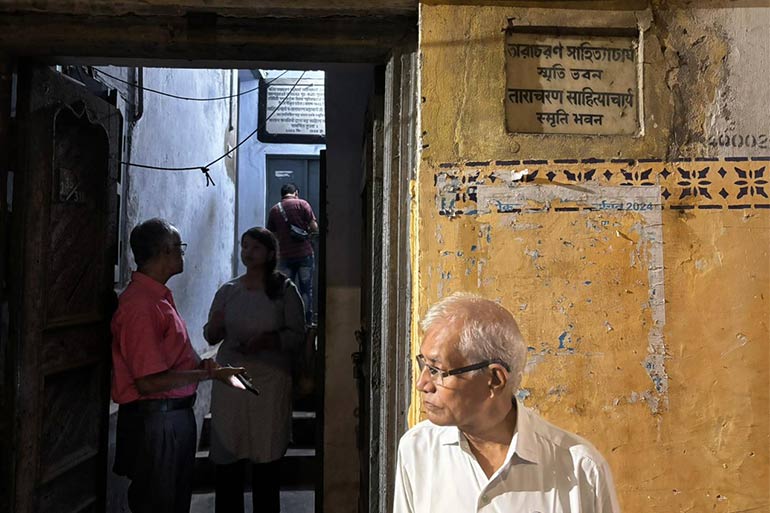
Professor Subrata politely disagrees. He is more hopeful. He believes that even if not from Bengal itself, a new leadership may rise from the diaspora — one that will truly revive Bengali identity in the future.
Subrata Babu, who now acts as the guardian of this library, spoke about the need to create a digital catalogue of the collection. Despite his busy schedule, he has already started the work by himself but wishes for collaborators. He wants to use technology as a form of resistance — against shallow reading habits and the growing culture of only reading summaries.
The library remains open every Sunday, from 6 pm to 8 pm.
Note:
Translated by Krishnendu Mitra
To read the original Bengali article, click here.











